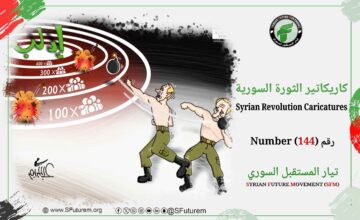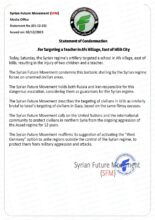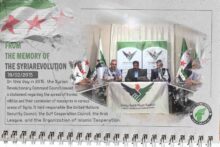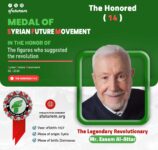Turkish Guardianship over Northwestern Syria
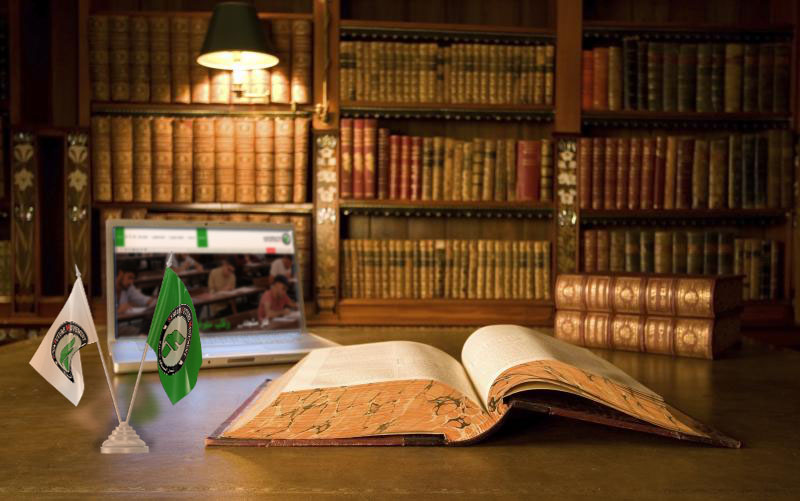
Introduction:
The dynamics of the Syrian map changed after the Russian military intervention in 2015, where the Russians managed to halt the advance of factions fighting the Syrian regime and enabled Bashar al-Assad’s authority to forcefully regain the south, center, and the entire Syrian coast. In 2016, with Iranian ground support and Russian air assistance, the Syrian regime regained Aleppo in a deal clearly made between the Russians and Turks, allowing the latter to take over the flow of humanitarian aid sent to Syria and launch the “Euphrates Shield” operation in 2016. This marked the Turkish intervention as part of the new phase agreements after the Russian entry, and the map settled almost finally with the Astana peace talks by the end of 2016, where the conflict shifted from the battlefield to deal-making and dividing the Syrian map into cantons.
The Syrian map stabilized with the Syrian opposition, allied with Turkey, concentrated in northwestern Syria, turning the region into a hub of internal displacement through settlements that ended the presence of elements opposing Bashar al-Assad’s authority in the areas they seized.
Following the Astana process understandings between 2018-2019, Turkey established three zones of influence in northwestern Syria: Euphrates Shield, Olive Branch, and Peace Spring, and strengthened its military presence in Idlib, the stronghold of Hay’at Tahrir al-Sham (formerly al-Qaeda-affiliated al-Nusra Front). This completed the picture with the diminishing threat of ISIS in 2016, as the Syrian Democratic Forces, in cooperation with the United States, independently controlled a large swath of land in northeastern Syria from the Astana process.
Consolidation of the Current Division:
It can be said that the Assad regime is now the only local party capable of expanding its control over the remaining areas. However, the difficulty lies in the presence of prior understandings with regional and international powers supporting the northern cantons, meaning any attempt by the Syrian regime to individually seize a canton could spark conflict with Turkey or the United States. However, if the Syrian regime reaches an agreement with Ankara through its Russian or Iranian ally to expand its control over the northwestern region controlled by Turkey’s allied Syrian opposition, it will not be able to manage it as one area, given its previous failed experience in asserting control over Daraa since 2018. The Syrian regime in Daraa is unable to effectively control it due to the Syrian opposition’s rejection of its rule or its inability to provide services to local residents.
It can also be said that Turkey subsequently expanded its authority over existing small border crossings and opened new ones, expanding the “Jarablus” and “al-Rai” crossings in the Euphrates Shield area to be civilian, humanitarian, and commercial crossings in November 2016 and May 2017, respectively. Turkish policy successfully monitored closely the goods entering through border crossings and the parties handling their transport.
Complete Turkish Control:
Turkey linked the areas under its control in Syria to the nearest Turkish province, with the relevant governors managing each area de facto. Shortly after the Euphrates Shield operation ended, the Mayor of Gaziantep visited Jarablus, praising her country’s success in improving municipal services. Such visits by Turkish officials, including the Interior Minister, became common, and Turkish authorities appointed “governor’s assistants” to mediate between them and local councils in Syria. The Turkish government surprised northern Syria by deciding to appoint a single governor to manage the areas of Turkish forces and allied factions’ influence in northern Syria in late 2023, granting Turks strong authority over their sphere of influence.
Additionally, some sectors are directly overseen by the relevant Turkish ministries, with their employees coordinating with local Syrian staff and Turkish entities operating in Syria. Turkey monopolized some sectors since 2016-2017, such as education and healthcare in the Euphrates Shield area, and managing camps in other areas, especially in Afrin and Peace Spring. The Turkish private sector has become an integral part of Turkey’s efforts to stabilize northern Syria, with Turkish construction companies undertaking residential and infrastructure projects, and the telecommunications sector becoming another area where private Turkish companies invest through local partners.
Lastly, Turkey aims to stabilize the area under its influence to ensure the voluntary return of Syrians in Turkey. This began in 2022 when the Turkish Interior Minister announced the return of half a million Syrians to the area, and the Turkish President himself stated that his country would build 200,000 housing units in 13 locations in northwestern Syria and return one million Syrians.
It can be said that Turkey has contributed to preventing further deterioration in the northwestern regions and improved the availability of food, electricity, housing, banking, educational, and health services. Turkey’s approach was primarily political before being humanitarian, through a well-planned project undertaken by high-level officials (the governor, prominent officials in the Turkish Disaster and Emergency Management Presidency, and the Ministry of the Interior) to stabilize the area in cooperation with specific relief organizations. Overall, the Turks succeeded in establishing full control over the region.
Guardianship Scenario:
The revolutionary groups in areas under Turkish control face multiple scenarios:
- Agreement with the Syrian regime: This scenario would require the Syrian regime to provide guarantees for those areas, which should enjoy a significant degree of self-autonomy, meaning the adoption of decentralized governance. However, any step taken by the Syrian regime towards decentralization could become a security concern for Turkey, as it may raise fears of formalizing the autonomy enjoyed by regions under the control of the SDF in northeastern Syria, which is unacceptable to Ankara. Regarding the Syrian regime in Damascus, any step towards power-sharing through extensive decentralization would be a significant concession and pose an imminent threat to the stability of Assad’s regime, which the Syrian regime refuses.
- The West Germany scenario: The Syrian Future Movement was among the first to propose this scenario, which unites through the economy the areas outside the Syrian regime’s control, meaning the Syrian opposition areas and the SDF regions. Although our information confirms Turkey’s principal agreement to implement this project, the ongoing war on the Syrian Democratic Forces and the destruction of their infrastructure make pursuing this option unfeasible at least for now, even though it is considered an ideal solution for the Syrian dilemma.
- The Syrian opposition formally requesting through the United Nations that the northwestern region enter under Turkish guardianship conditionally and temporarily.
In Chapter XII of the United Nations Charter titled “The International Trusteeship System,” a legal framework is established for trusteeship, wherein international law imposes fundamental objectives for the trusteeship system:
- Consolidating international peace and security, thereby relieving the region from any accusations against the Syrian regime or Russia that the factions there are terrorist organizations.
- Working to promote the political, social, economic, and educational advancement of the inhabitants of the trust territories and their progressive development towards self-government or independence according to the particular circumstances of each territory and its peoples and in accordance with the freely expressed wishes of the peoples concerned, and in conformity with the terms of each trusteeship agreement. Thus, Turkey faces a legal responsibility in developing the region and not merely considering it an area of influence without genuine engagement.
- Encouraging respect for human rights and fundamental freedoms for all without distinction as to race, sex, language, or religion. This ensures an end to violence and chaos in the region, guarantees a more lawful reality, ensures that the Syrian map is not divided and fragmented, and implies that Turkey assumes its responsibility until Syria reaches a stage of self-determination and preparation for a comprehensive political solution.
Challenges of Trusteeship:
Article 78 of the said chapter of the United Nations states: “The trusteeship system shall not apply to territories which have become Members of the United Nations, relations among which shall be based on respect for the principle of sovereign equality.”
While Syria is still recognized as a sovereign state by the United Nations, efforts can be made to revoke this status by considering the Syrian regime as lacking international legitimacy. Syrian legal experts thus face a historic task in this regard.
Conclusion:
Undoubtedly, what is expected differs from reality, and the aspiration to create a modern, just, democratic, and healthy national state is the goal that all free national Syrians strive for. The presence of multiple scenarios before the decision-makers – here referring to the political opposition – provides flexibility in maneuvering in all areas.
Therefore, at the Syrian Future Movement, we recommend the following based on our vision:
- Work on a political solution with the Syrian regime that ensures the rights of the Syrian people, considering it a realistic political practice for the Syrian opposition.
- Strive to implement the West Germany project at the same level.
- Work on a project to place the northwestern region under Turkish trusteeship conditionally and temporarily.
These scenarios should be pursued equally, entrusted to several different political opposition figures, considering these scenarios as realistic options that transform Syria’s stagnant reality into a better future. Any successful scenario is undoubtedly a positive step towards the return of Syrians to their original areas and their contribution to the resurgence of their country.
- We recommend in the Syrian Future Movement that a Syrian and international legal team be formed in cooperation with the Turkish government and the United Nations to find legal ways to potentially implement a temporary and conditional Turkish trusteeship in the northwestern region.
- We recommend that the official political opposition officially request the Turkish government to place the northwestern region under temporary and conditional Turkish trusteeship.
Jomaa Mohamad Laheep
Political Office
Research and Studies Department
Articles
Syrian Future Movement (SFM)
